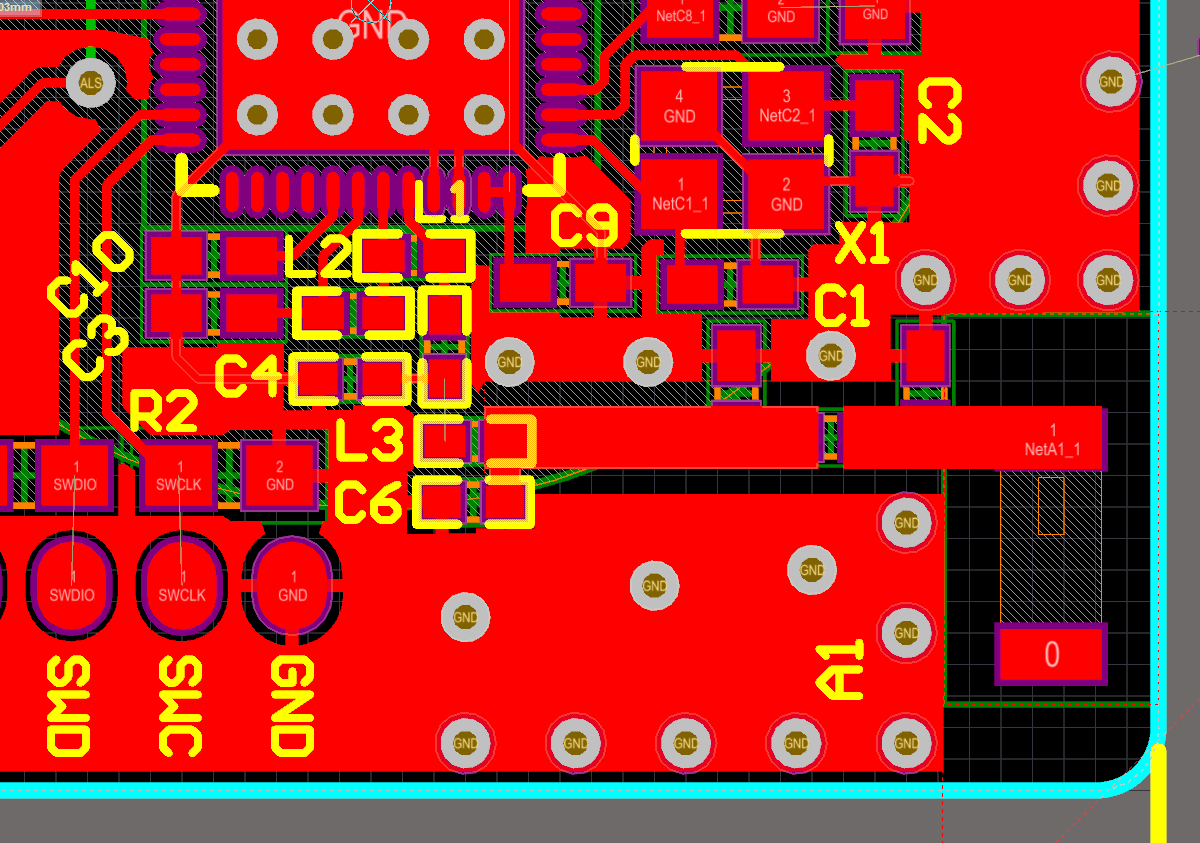I'm trying to determine the most effective layout for a 2.4GHz chip antenna on my PCB. I';ve read through a few application notes and Datasheets but none really clarify which antenna setup is most efficient or will allow the best range.
Right now I have looked at two options, but I'm no closer to knowing which might be best. I'm using a discrete Balun network and a pi-network for later tuning.
The two options I'm toying with right now are the horizontal orientation routing:

Or the Horizontal routing, diagonal antenna:

So which one would give me the best range?
I'm also completely uncertain if I've set up the feed-line correctly, so any tips or advice on setting that up correctly would be greatly appreciated too!
Antenna I'm using: http://www.johansontechnology.com/datasheets/antennas/2450AT18B100.pdf

